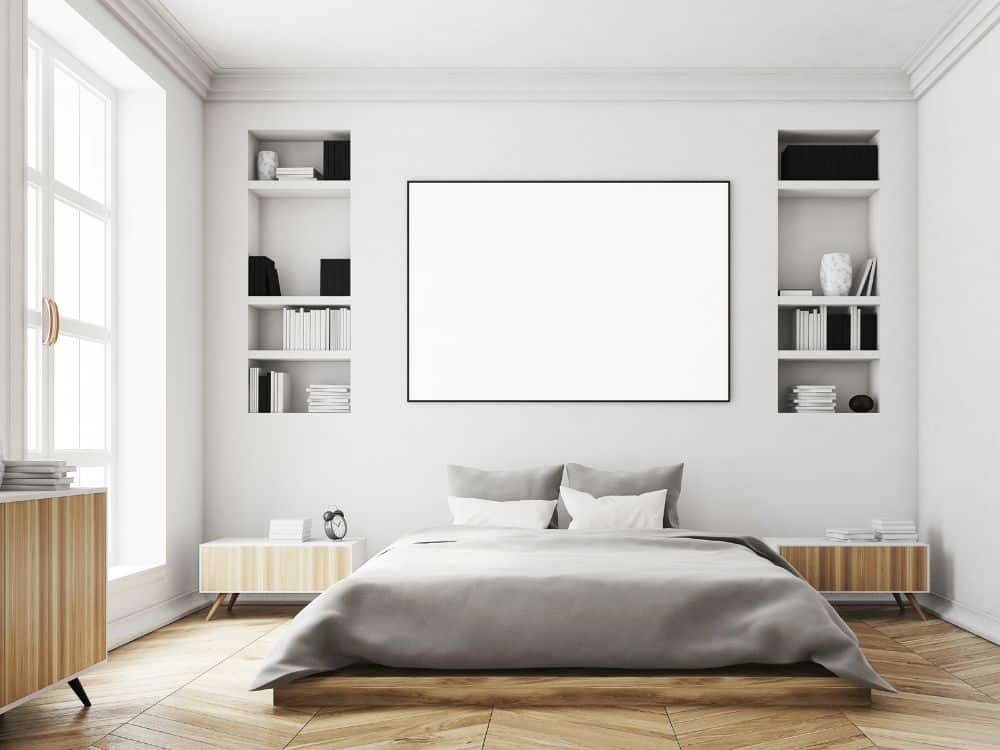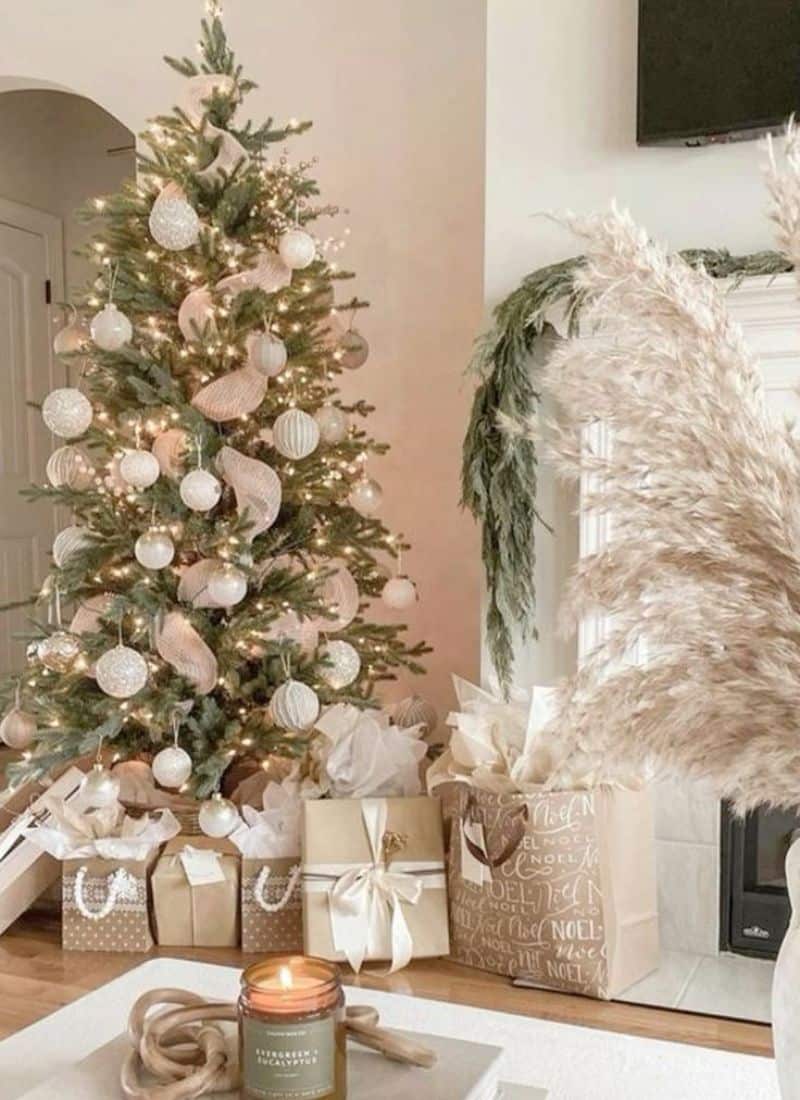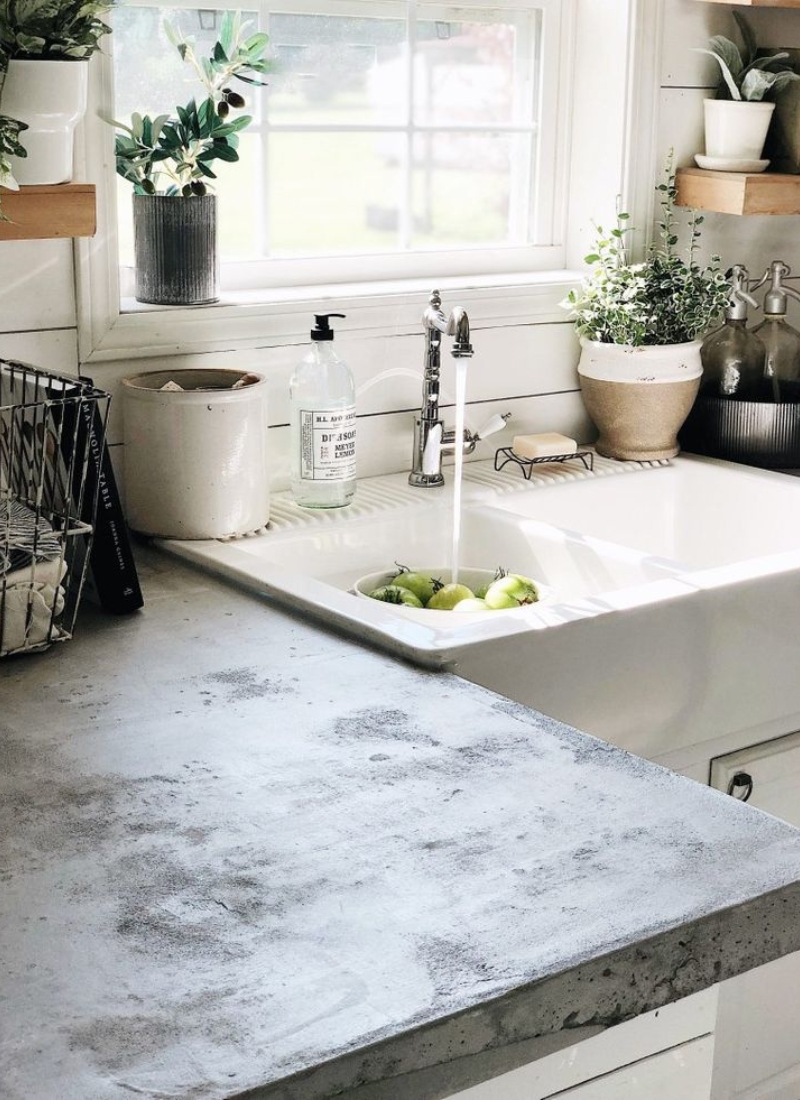Hey all! My name is Julia, former college student and a home decor enthusiast who loves DIY home improvement projects and finding creative ways to decorate any living spaces on a budget. Recently moved from my dorm to my new apartment which I renovated from scratch and I am here to help you with tips & tricks about home decor/college and more 🙂
Wondering if your nightstands need to match your dresser? This bedroom style guide breaks down the pros and cons of matching versus mixing, so you can create a space that feels stylish and personal.

Do nightstands have to match the dresser? No, your nightstands don’t have to match your dresser at all.
It’s one of those design myths that sounds legit, but in reality? Totally optional.
I used to stress about this so much when I was putting together my first apartment, thinking everything had to be perfectly coordinated or it would look like a mess.
The truth is, some of the most beautiful bedrooms I’ve seen break this rule completely.
Whether you’re working with hand-me-down pieces or deliberately choosing different styles, there are tons of ways to make it all work together.
Let’s get into the benefits of matching nightstands and dresser styles if that’s your thing.
But honestly, mixing things up can look even better sometimes.
I’ve got some practical tips for pulling off that perfectly imperfect, lived-in look that actually feels like home.
Do Nightstands Need to Match the Dresser?
Your bedroom furniture doesn’t have to be perfectly matched to look amazing.
Matching nightstands and dresser styles create one vibe while mixing things up brings a totally different energy to your space.
Traditional Sets vs. Mix-and-Match
Once upon a time, furniture stores sold bedroom sets where everything matched. Bed, nightstands, dresser—all in the same wood tone, same shape, same vibe.
And honestly? That worked if you loved symmetry and didn’t want to think too hard.
Matching bedroom set aesthetics create that effortless, hotel-room energy. Super cohesive, super clean.
But these days, mixing furniture styles in a room is way more common—and way more fun.
You can pair a sleek black dresser with warm wood nightstands and get a more layered, interesting look.
Coordinating nightstand and dresser design doesn’t mean matching. It means letting pieces talk to each other—maybe they share a finish, texture, or hardware. That’s what makes a space feel intentional without being boring.
Matching Style

If you’re someone who craves order, symmetry, and a no-fuss approach to decorating, matching nightstands and dresser styles might be your sweet spot.
Shopping is super easy—you grab a set, and just like that, your room looks polished and pulled together.
Matching bedroom furniture for cohesiveness can take the guesswork out of styling.
Most accessories—lamps, plants, throw pillows—just work because the furniture already speaks the same design language.
In smaller spaces, uniform vs eclectic bedroom furniture can even help things feel cleaner and more spacious.
There’s also a visual calm that comes with matched furniture.
When your nightstand and dresser share a wood tone or color, everything clicks.
But the downside? It can feel a little predictable.
You lose the chance to mix in personality pieces—like that vintage nightstand you thrifted or the bold dresser you fell in love with.
That’s where mixing styles comes in, and honestly, that’s when the real fun starts.
Mixing Style: Why Mismatched Nightstands and Dressers Work

On the flip side, mixing furniture styles in a bedroom lets you tell your story through design.
Maybe you’ve got your grandma’s vintage dresser and just found two dreamy rattan nightstands at a flea market.
Or you love the combo of rustic farmhouse with mid-century minimalism.
The mismatched approach feels curated and personal—not cookie-cutter.
Plus, it gives you flexibility. You can add new pieces over time without redoing the whole space.
Mismatched nightstands give you freedom to incorporate both aesthetics.
One sleek walnut piece paired with a distressed wood table creates an interesting conversation between styles.
This approach works especially well if you get bored easily with décor. You can swap out individual pieces over time without replacing entire sets.
Adding Character and Visual Interest
Mismatching furniture breaks up the monotony that matching sets can create in bedrooms.
Different materials, textures, and shapes create natural focal points throughout the room.
A woven nightstand next to a sleek marble-topped dresser? Yes please.
You get more texture, more contrast, more wow.
Color variation also adds depth without being overwhelming.
You might choose a white dresser with warm wood nightstands, connecting them through shared metal hardware or similar styling accessories.
The key is making sure your mismatched nightstands and dresser share at least one common element—material, color, era, or design detail.
This creates cohesion while letting your personality shine through.
Related posts: Should Your Curtains Match Your Bedspread?
Mix and Match Nightstands Like a Pro
Your nightstands don’t have to be identical—but they should feel balanced.
Mixing furniture styles in a bedroom works best when both pieces make sense together scale-wise.
Try pairing a taller, skinny table with a shorter, wider one. They don’t need to match, but they should complement each other.
Also: try to keep nightstand height within 2-3 inches of your mattress top.
That way, things feel cohesive without being too symmetrical.
Coordinating Materials and Textures
Matching wooden nightstands to dresser? Optional.
But coordinating materials? That’s the secret.
Think: different wood tones with similar grain.
Or warm oak and cool walnut linked by matching brass hardware.
Coordinated nightstand and dresser design doesn’t mean carbon copies—it just means thoughtful pairings.
Using different wood tones in the bedroom is totally fair game.
It just works better when there’s a shared element, whether it’s the finish, shape, or style.
Small details make all the difference in creating a cohesive look.
Tips for Coordinating Your Bedroom Furniture
The secret to a cohesive bedroom isn’t forcing everything to match perfectly—it’s about finding the right balance between colors and finishes while layering different elements that speak to each other.
Balancing Colors and Finishes
Mixing different wood tones in the bedroom actually creates more visual interest.
Your walnut nightstand can totally vibe with that lighter maple dresser if you bridge them with shared undertones.
Look for pieces that have similar warmth levels—either all cool-toned woods or all warm ones. Paint is your secret weapon here.
Painting nightstands to match a theme can pull together mismatched pieces without breaking the bank.
Тry painting drawer fronts or hardware to create a subtle link between mismatched furniture.
And coordinating hardware on bedroom furniture is like styling your outfit with accessories.
Brass knobs, matte black pulls—small changes that make a big difference.
Layering Bedroom Decor Elements
Your bedroom decor should feel like a conversation between different pieces, not a matching uniform.
Start with your biggest pieces—bed, dresser, nightstands—then layer in smaller elements that create connections.
Textiles are game-changers for pulling together mismatched bedroom furniture.
A throw pillow that picks up the wood tone of your nightstand while sitting on a bed that matches your dresser creates that visual bridge you need.
Styling lamps on mismatched nightstands gives you another opportunity to coordinate.
Same lamp style on different nightstands creates unity, or try different lamps in the same color family.
And painting nightstands to match a theme is a fun weekend DIY project, especially if you scored them secondhand.
Or try bedroom color accents—like repeating blues or earth tones across your furniture and bedding—to keep things visually cohesive.
Mixing Eras, Materials, and Textures
Buying full bedroom sets? That’s kind of a thing of the past.
Modern design just loves mixing furniture styles in a room to build personality and depth.
Mid-century wood paired with boho cane? Yes. A glam gold lamp on a rustic reclaimed wood nightstand? Totally works. Just look for a common thread like tone, material, or shape.
Using different wood tones in the bedroom is totally fair game now.
You might put a dark walnut dresser next to lighter oak nightstands, as long as their grains or finishes have something in common.
Those contrasts make your room feel curated instead of cookie-cutter. Just keep it to two or three materials, tops. Any more and things get a little wild.
FAQ (Frequently Asked Questions)
What should bedside tables match?
Your bedside tables don’t have to match anything in particular. They should just feel connected to your room somehow.
I like to think of it as pieces having a conversation, not being identical twins.
Coordinating nightstand and dresser design works well if you focus on one element—maybe color, material, or style.
Nightstands might be totally different from your dresser, but all share a warm wood tone.
Or maybe they just match each other, or your bed frame. The only thing that matters is they don’t look totally random.
Is it a design no-no to have different styles for my nightstands and dresser?
Not at all! Mixing styles can make your bedroom way more interesting than a matching set.
I’ve seen rooms where a modern nightstand looks awesome next to a vintage dresser.
That contrast adds personality and keeps things from feeling too predictable.
Just find some common ground—maybe it’s a similar color palette or matching brass hardware. That’s usually enough to tie things together.
Do nightstands need to match the bed frame?
Your nightstands definitely don’t need to match your bed frame.
Matching vs mixing bedroom furniture sets is really just a personal choice now.
Just make sure the heights work together and the whole vibe feels intentional, not thrown together last minute.
What are some tips for choosing a nightstand if I don’t want a matchy-matchy vibe?
Pick nightstands that complement your other furniture instead of copying it. Look for pieces that share one key element, but differ in other ways.
Try mixing materials—maybe a wooden dresser with a rattan nightstand. Or switch up the shapes, like round nightstands next to a boxy dresser.
Mixing materials for nightstands can totally change the feel of your room. I honestly love seeing unexpected combos that just work.
Should bedside tables have matching lamps?
Your bedside lamps don’t have to match, especially if you’re already mixing up your nightstands.
But they should feel balanced somehow. You could use lamps of different styles but similar heights.
Or try completely different lamps that share the same shade color. It’s all about creating visual harmony without being too matchy.
If you have mismatched nightstands, similar lamps can actually help tie the whole look together.
It’s like giving your room a common thread to follow.





